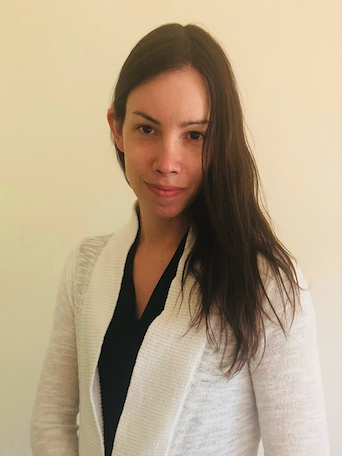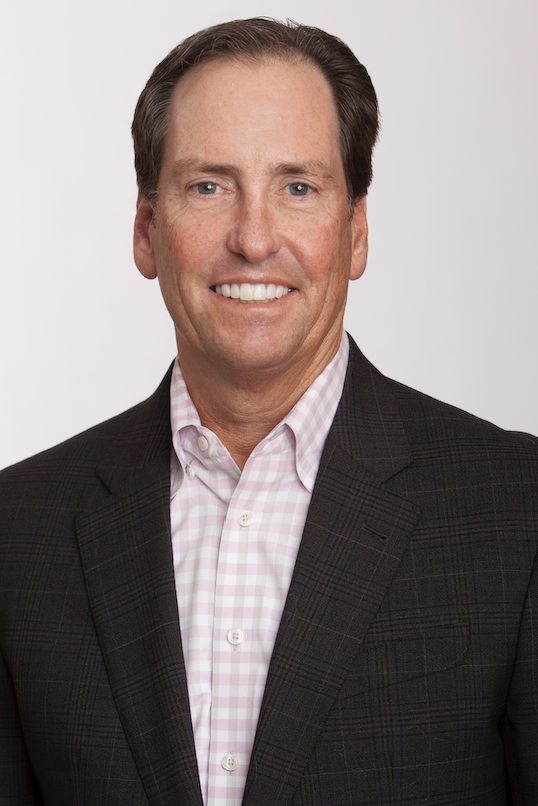Transcripts

Erik: Joining me now is Lyn Alden, founder of Lyn Alden Investment Strategy. Lyn prepared a terrific slide deck to accompany today's interview. Registered users will find the download link in your research roundup email. If you don't have a research roundup email, it means you haven't registered yet at macrovoices.com. Just go to our homepage, macrovoices.com, click the red button that says looking for the downloads.
Lyn, I have really been looking forward to getting you on the show because, frankly, one of the biggest names that's come up in reaction to Jeff Snyder's interview last week was yours and a lot of people saying, hey, wait a minute, Jeff is really telling us a story that banks heavily on the idea that the bond market is a really solid source of information. And of course, a lot of people are saying wait a minute, if the Fed owns 30% of the 30-year Treasury issuance, or whatever the statistic is, I've lost track of it. It's kind of hard to believe that there could really be efficient price discovery in that market. So what did you think of Jeff's interview overall? And in general, this discussion about secular inflation. Which side of the debate are you on and particularly what do you think about the value of the bond market as a predictive signal?
Lyn: Well, thanks for having me on, Erik. Always happy to be here, big fan of your podcast. And you know, when it comes to Jeff's work and I have a lot of respect for areas that he covers. And one of the things we agreed to touch on was, you know, some of the things right, I view differently than his discussion on your podcast. So the areas that I would have viewed differently is that I am more in the inflationist camp and had been for the past couple years. And I don't view bond markets as being a particularly reliable signal about forward inflation expectations overall. And I think history bears that out. So I'm happy to go over a couple of the, you know, the slides that I brought here to kind of cover those points, but that kind of sets out, you know, that the areas that I that I view things differently on. And so if you look at, for example, you know, kind of set the stage, the first slide deck, we can see kind of the long term, century long fiscal monetary policy that we're working through, right.
So, as the chart shows, I think, you know, the 1940s are an interesting comparison. Obviously, they don't cover every aspect of it. But in terms of fiscal monetary policy, I think that that's the closest period that we have. And so you had Jeff discuss that period. So I think that was, you know, that's a period I like to focus on too. And so I think that's worth exploring in more detail. So as we saw, you know, everybody, when they think about inflationary decades, they think about the 70s. But as we can see from these charts, the 70s are actually quite different. So the chart on the left there shows debt as a percentage of GDP, and I break it into federal debt versus non-federal debt, and non-federal debts, mostly private debt, you know, companies and households, a little bit of state debt in there as well, such as all the debt that's non monetary sovereign. And then you have federal debt, which is a pretty different beast. And we saw that, you know, private debt peaked in the early 1930s. And then again, in the 2008 and 2009 period, and those are associated with major, you know, deflationary banking crises.
And then what you have is, you know, the echo from that, you know, a decade later, is that you had basically periods of stagnation, and then some sort of external catalysts that resulted in a lot of debt building up on the public sector. And that tended to be more inflationary. And when we look at the chart on the right there, we can see that, you know, basically, short term interest rates go to zero during this banking crisis for the first time in decades, combined with the monetary base going up. And so that tends to be somewhat of a not particularly inflationary period. But when you go later into that you have massive fiscal deficit spending. At a time when interest rates are super low, and the Federal Reserve's monetizing it, that's when you're more prone to get that inflationary type of environment. So I think the biggest difference between this the 40s, and 70s, is that in the 70s, because debt was low, they were able to raise rates to rein in inflation, which was in large part driven by bank lending, whereas 1940s, they were unable to raise interest rates, because debt was so high, and inflation was coming from fiscal spending, rather than bank lending anyway. So it's unclear that raising rates would have even helped. And so basically, you had a big disconnect between rates and inflation. So on the second slide there, I showed this, I show basically, you know, the on both those charts, the blue line is the year of your CPI. So you can see that both the 40s and the 70s, on average had pretty high inflation. And the big difference was that in the 70s, interest rates generally kept up with inflation more or less, whereas in the 40s, you had a complete disconnect between inflation and rates because you had a period of financial repression. And I would contend that the 2020s are shaping up, at least in this regard to be more like the 40s we're gonna probably see ongoing disconnects between inflation and bond yields.

Erik: Joining me now is Alhambra Investments Chief Investment Officer Jeffrey Snider. Jeff has prepared a terrific slide deck to accompany today's interview. Registered users will find the download link in your research roundup email. Now if you don't have a research roundup email, it means you haven't registered yet at macrovoices.com. Just go to the homepage at macrovoices.com Look for the red button that says looking for the downloads.
Jeff, I am really really looking forward to this interview with you because you are one of the absolute smartest guys that I know and you particularly understand the dollar funding system internationally. And for any listeners listening who are perhaps new to MacroVoices and are not aware. At macrovoices.com/edu for Eurodollar University, you can find a detailed series where Jeff explains the entire international global US dollar funding system, the Euro dollar system, which I think is going to play a role in today's discussion. The topic of which will be inflation and particularly Jeff, just about all of the smartest macro guys I know have kind of flipped from the deflation camp into the secular inflation camp.
Just last week, we had Ole Hansen on this program describing how the lack of investment in oil producing resources is likely to lead to a very significant oil price shock to the upside in coming years. And of course, oil prices, energy prices are one of the biggest drivers of inflation. I think we've gotten to the point Jeff, where the last two men standing are you and Dr. Lacey Hunt. We're trying to get Dr. Lacey Hunt back on the program. Our producers are working on that. But let's start with our own Jeff Snyder, who knows the Eurodollar system. So well. Why is it Jeff with everybody else saying hey, look, secular inflation is just so clear. There's so many reasons to think that the MMT crowd is going to keep printing money, debasing currency and so forth, has to lead to runaway inflation someday. You're saying no you don't see it? How come?
Jeff: Well, there's two things here Erik. By the way, thanks for having me back on to try to explain what's going on here. Because I think, you know, inflation is the one topic that everybody wants to talk about for very good reason. And when I say you know there isn't inflation happening this year, people are like, wait a minute come on. The CPI is at 6.2% in October, which is the highest been 30 years. How can you possibly say there's no inflation? And the answer is we have to define our terms. We have to we have to be specific about what it is we're actually talking about. And the one part of it is what you just said, Erik, which is, you know, debasing the currency, money printing, and that gets to the heart of what we're really want to talk about. But there's other things involved too, specifically to start with, you know, when we look at the CPI. Is the CPI always talking about inflation? Is it always reflective of actual inflation? Or is there possibly very different underlying circumstances that could be creating consumer price bubbles or consumer price deviation? That's the first thing.
When we look at the CPI, is the CPI really just an inflation index or is it a consumer price index, where consumer prices could be moved by other factors that aren't inflation? And you know, it's understandable why people would think that it's only the other. That CPI is always inflation, because that's really how everybody talks about it. And it's true, not just to the public, but also central bankers and economists. You know, they do all sorts of studies, for example, about the CPI and what's the best predictive model of the CPI because, you know, obviously, we have a good interest in trying to figure out. If we do see consumer prices rising, is it going to last? Is it going to go on forever? Is there any sort of secular trend there? And so these academic models, take a look at the CPI is if every CPI is exactly the same and so their conclusions are usually about what is the best predictor of the CPI? And I don't think that's really the right question to ask because, again, there are different types of situations where consumer prices could be reacting or be responsible from other different factors. Very different factors that lead to very different conclusions and all sorts of different implications.
So if we get into the slides here, that's really our goal here. It was started on slide three is we look at the CPI, we look at consumer prices, what we're really interested in is, is it just consumer prices rising or is inflation responsible for why consumer prices are going up? And what the you know, the academic, economist, you know, mainstream orthodoxy tells you is that there really isn't a good way to sort out predictive CPI values. It's really pretty much a crapshoot. They figured the best methods is by using professional economists who use econometric models. You know, things like the blue chip economic survey because they have a more, at least a decent track record of predicting the CPI.
And you look at some of the other factors, they looked at, you know, some of the other ways of predicting consumer prices. Among the worst they say is financial markets, or bond yields, which is kind of a, what we're trying to get at here, which is do bond deals predict the CPI or do bond yields react only to inflation in the CPI. And so that's really where we're gonna start. If we go to slide four, throughout history, consumer prices have been driven by very different factors at very different times. We're very much familiar with the 1970s and the great inflation. And so we're kind of led to believe that anytime the CPI accelerates, it's because of inflation. As you said before printing too much money, currency devaluation, that kind of thing. But in truth, you have to go back before 1955. But usually, when the CPIs went up, it had nothing to do with monetary printing. It had nothing to do with money printing or excess currency. And a perfect example of that is 1950-51.
We had what was essentially a very classic supply shock, which was, you know, the North Koreans invaded South Korea on June 24 of 1950. Within a couple of weeks, American consumers went to every store they could find and started buying everything imaginable, because they understood that pretty soon, the US government was going to start redirecting economic resources until the warfighting effort when the US finally joined the Korean conflict. And so it was very much like World War II where consumers understood that the availability of goods is going to be restricted. And so it created this massive bottleneck, where consumers went absolutely nuts buying everything they could possibly buy, while it was still available. At the same time, the supply side was not able to keep up with that demand, because number one, it was a shock or a true shock in the fact it was unpredictable. But also as more and more resources were taking away from the consumer sector and channeled into the defense industries. It was again, supply just could not keep up with demand.
And so in terms of small economic prices, from around July 1950 to February 1951, the Consumer Price Index accelerated to at that time, which was at an annual rate of more than 12%. So it wasn't money printing, it wasn't you know, the currency devaluation even though the Federal Reserve was convinced that it was. The Federal Reserve actually provoked a political crisis to gain its independence from the Treasury Department, because those at the Fed were absolutely concerned this rise in consumer prices was inflationary, therefore, it was going to continue unless they were able to gain independent monetary policy. But they again, they got the inflation thing wrong. They didn't look at the CPI as a supply shock. And the level of CPI puts what we're seeing today to shame. Again, the annual rate of 12%. That was a massive burst of consumer price inflation. But it wasn't really inflation. It was actually just a surprise shock.

Erik: Joining me now is Ole Hanson who heads up commodity market strategy for Saxo Bank. Ole has prepared a fantastic slide deck for us listeners. You'll find the download link for the slide deck in your research roundup email. If you don't have a research roundup email, just go to our homepage macrovoices.com. Look for the red button that says looking for the downloads.
Ole before we dive into the slide deck. I know you've been reading a lot about inflation. I don't know if you caught David Hay on this program, recently coined this phrase greenflation, which I think perfectly explains how the goals of ESG are wonderful, but the way they're going about it by villainizing the energy industry is really I think, setting us up for a big price shock in the future. Did you catch that interview? And what are your thoughts generally on secular inflation?
Ole: Well, good afternoon, Erik and thank you very much for having me and inviting me back. I fully subscribe and we as experts fully subscribe to the to the non-transitory inflation outlook. And the energy surge that we've seen this year. Our general commodity surge was seen as part of that process. Obviously, we come out of the pandemic, we've seen the global economy, which has been absolutely overstimulated search and demand for power around the world. And we end up with shortages all over the place. But part of that is also the transformation and then the intense focus. You can almost argue that it's quite clear that back in the 50s, and 60s, we had an arms race. It was all about developing nuclear technology and governments were throwing billions of dollars into it.
This time around, we have another arms race, and that's the climate. And that's basically leading to billions of dollars being thrown into those efforts. And you can sometimes worry a little bit that that money not being used in the in the smartest way. But it is obviously also trying to send signals to the market then signals to population that something is being done. But we've seen this year how, especially in Europe, and also in Asia, how we suddenly came short on power because we didn't have the gas we need and the wind and the sun was not producing the amount of energy that we had expected. And it just highlights how we can be left exposed and in the coming years is a development, we continue to see because the transformation will require a lot of energy, it will require a lot of mined metals. And if the companies are producers, mining companies aren't being villainized. And banks are not prepared to lend him the cash or investors not prepared to put the money. And then obviously we do have a transformation which is just going to go become ever more expensive.

Erik: Joining me now is Mike Green, Chief Strategist and portfolio manager for Simplify Asset Management. Mike, it's great to have you back on the show. We had the big day today on Wednesday afternoon. We're recording this the day before this podcast airs with the Fed announced that they're intending to do what? Why don't you give us the full briefing of what the Fed did today and what it means and what you see on the horizon?
Mike: Well, I think the easiest way of just describing what happened today with Jerome Powell's testimony in the release statement is that the Fed came out more dovish than I think people had broadly expected them to. They indicated that yes, they will begin tapering. They have the ability to either back off or to accelerate against them. But I think the most important piece of information that came away from it was the Fed's continued emphasis on the fact that they believe inflation is transitory, and importantly, even in the labor market, which has traditionally been thought of as a key driver of the Fed's behavior that they do not see us as having normalized or come anywhere close to reaching full employment. And they're largely discounting many of the wage pressures that they're seeing.
You know, Powell was relatively humble in terms of the certainty of where they are, but I think it was somewhat unequivocal that this was a very dovish presentation. And the real question, I think is going to be how credible does the Street view the uncertainty around whether they should hike or not. Right? The direct words were when we reach full employment, then we'll figure out whether we're addressing the inflation components. Whether we've adequately met the inflation objectives. And I think that's a pretty important statement for one of the very first times you almost would have expected something like this out of you know, if a labor economist like Yellen, but Powell very clearly came out in favor of let's let the economic environment run hotter, as we tried to get people back into the labor force.

Erik: Joining me now is David Hay, founder and Co-CIO of Evergreen Gavekal. David, it's great to get you back on the program. I've been asking everybody the same question as an opener, which is okay, inflation, are we talking secular structural inflation, which is what I think or do we believe Janet and their friends in the government who say, it is transitory. So I want to get your take on that. But particularly, you've been writing about something called greenflation. What the heck is greenflation?
David: Well, firstly, thank you very much for having me on the show. It's a privilege, especially since I just listened to your podcast last week with one of my heroes, Luke Gromen. And he did not talk about re-inflation last week, even though he's written on that somewhat. So I appreciate the opportunity to talk about that. Because I think it's hugely important. And I think it plays a significant role in this debate about whether inflation is transitory, as the Fed is saying, or it's much more enduring, which I'm with you on that and Luke. And, you know, frankly, based on the Fed's forecasting record, which is horrific. And I think the fact that they're saying it's transitory is probably a pretty strong indication that it's not. Maybe once they finally concede that it's here for years, that'll be the time to take the other side of the trade.
But basically, the idea of greenflation has to do with the reality that the planet is involved in a great green energy transition. And just one key element to this, which I think is inarguable is that this is the first time in human history that we're moving from more efficient fuel sources to less efficient fuel sources. And I'm aware of, you know, of all the environmental reasons why we're trying to do that. But that doesn't change the fact that it's extremely daunting to make this happen, and especially on the very ambitious and I'd say, overly ambitious and unrealistic timeframe that policymakers around the world are trying to achieve. And we're seeing the wages of this already, with tremendous energy inflation occurring in Asia and Europe. I think most Americans are unaware. We have natural gas that's doubled. Natural gas is trading for around $6 per million British thermal units, MMBtus, but in Asia and Europe it's $30 or more. So you've got, you know, really a shocking amount of energy inflation occurring and real risks of rationing, and outright shortages that could take lives if the winter is cold as a lot of forecasters are predicting in Europe.
So, you know, we've got this war on fossil fuels, where you get a number of American cities that are trying to prevent natural gas being utilized, and fighting the transmission of hydrocarbons, you know, pipeline shutdowns, even existing pipelines. There's the New Yorker gave the platform to a Swedish professor. He's written a book on how to blow up pipelines. He's avidly recommending that people go out and blow up energy pipelines. It's just unbelievable that he would be given that kind of a forum. But regardless, I mean, obviously, we know that US policy is very anti-fossil fuels. So guess what, this is the first time in history that we've seen huge price spikes without a supply response. So we're still around a point in this country where the drilling rig count is inadequate to offset the decline rate in the shale area, which is, of course, where we've had the tremendous growth of both natural gas and crude oil is because of shale. That is, you know, Erik, and a lot of people don't. Shale has an extremely rapid decline rate. So you have to drill a lot just to stay even. And that's hard to do when you've got pressure from your investor base about ESG. And you've also got pressure to not make those investments, but rather to buy back shares, which these companies are doing. So all these things are feeding this green inflation type of thing. And it's not going away, it's going to be with us for years to come. Whether it's right or wrong.
MACRO VOICES is presented for informational and entertainment purposes only. The information presented in MACRO VOICES should NOT be construed as investment advice. Always consult a licensed investment professional before making important investment decisions. The opinions expressed on MACRO VOICES are those of the participants. MACRO VOICES, its producers, and hosts Erik Townsend and Patrick Ceresna shall NOT be liable for losses resulting from investment decisions based on information or viewpoints presented on MACRO VOICES.
